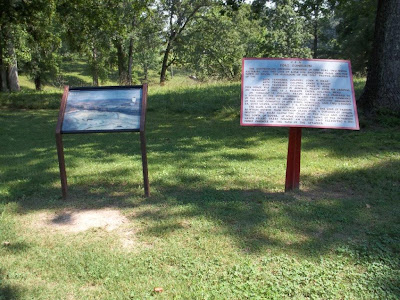C. S. A.
THE RIVER BATERIES
CAPTAIN JOSEPH DIXON
(KILLED)
CAPTAIN CACOB
CULBERTSON
COMMANDER
The Lower Water Battery established at this point mounted
eight 32-pounder guns and one 10-inch Columbiad. Company A, 50th Tennessee, under Captain T.
W. Beaumont, manned the four guns on the right, and Company A, 30th Tennessee,
under Captain. B. G. Bidwell, manned the four guns on the left. A detachment of Captain Reuben R. Ross’
Battery of Maury Artillery under Lieutenant H. S. Bedford operated the
Columbiad, which was emplaced on the extreme left.
On February 13, 1862, this battery engaged in a duel with
the U.S.S. Carondelet. Near the close of
the bombardment, which lasted nearly an hour, a projectile struck and disabled
the third gun from the left and killed Captain Joseph Dixon, Commander of the
river batteries. It also disabled for a
short time Captain J. B. Shuster, and killed and wounded two or three privates.



























